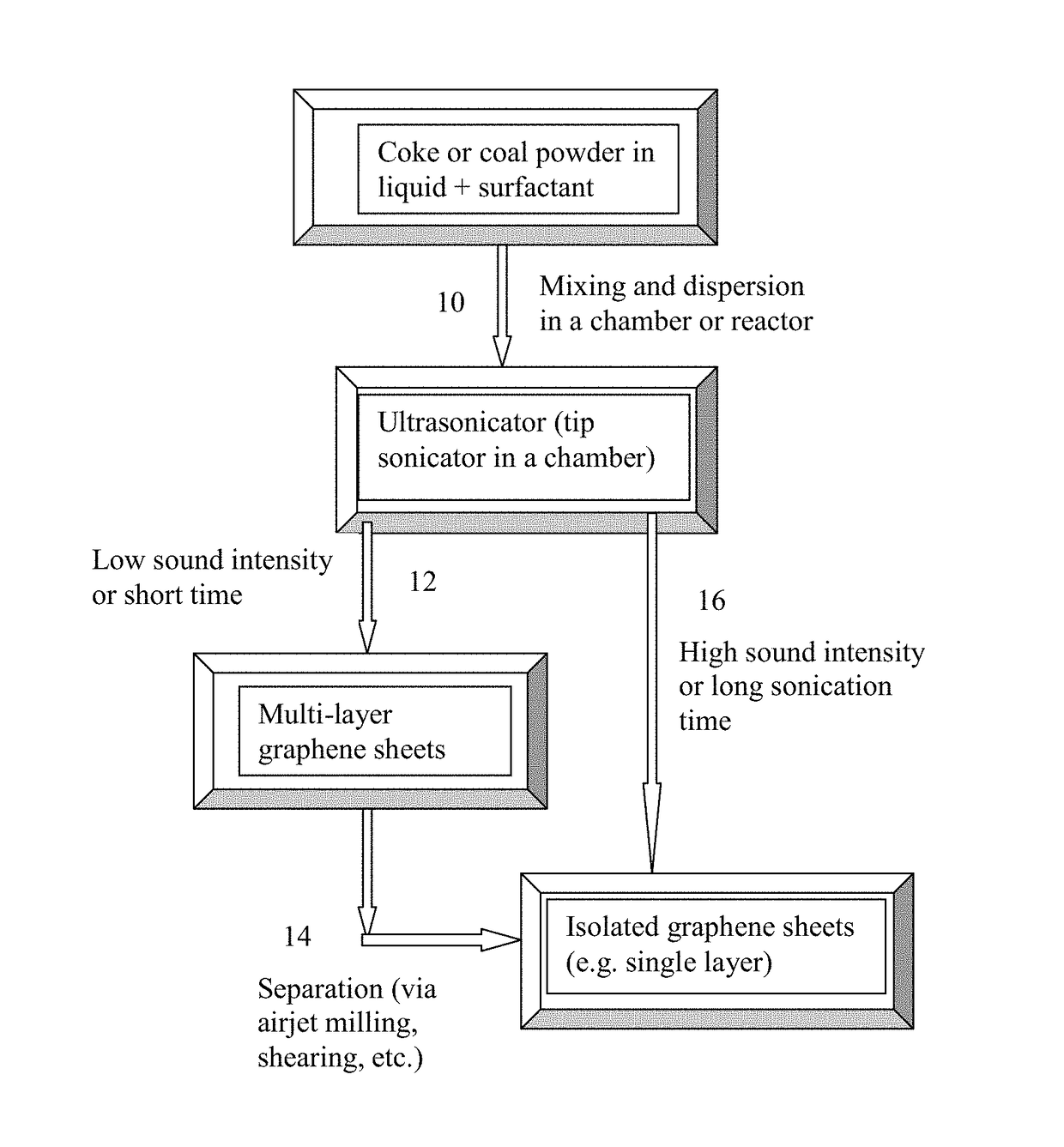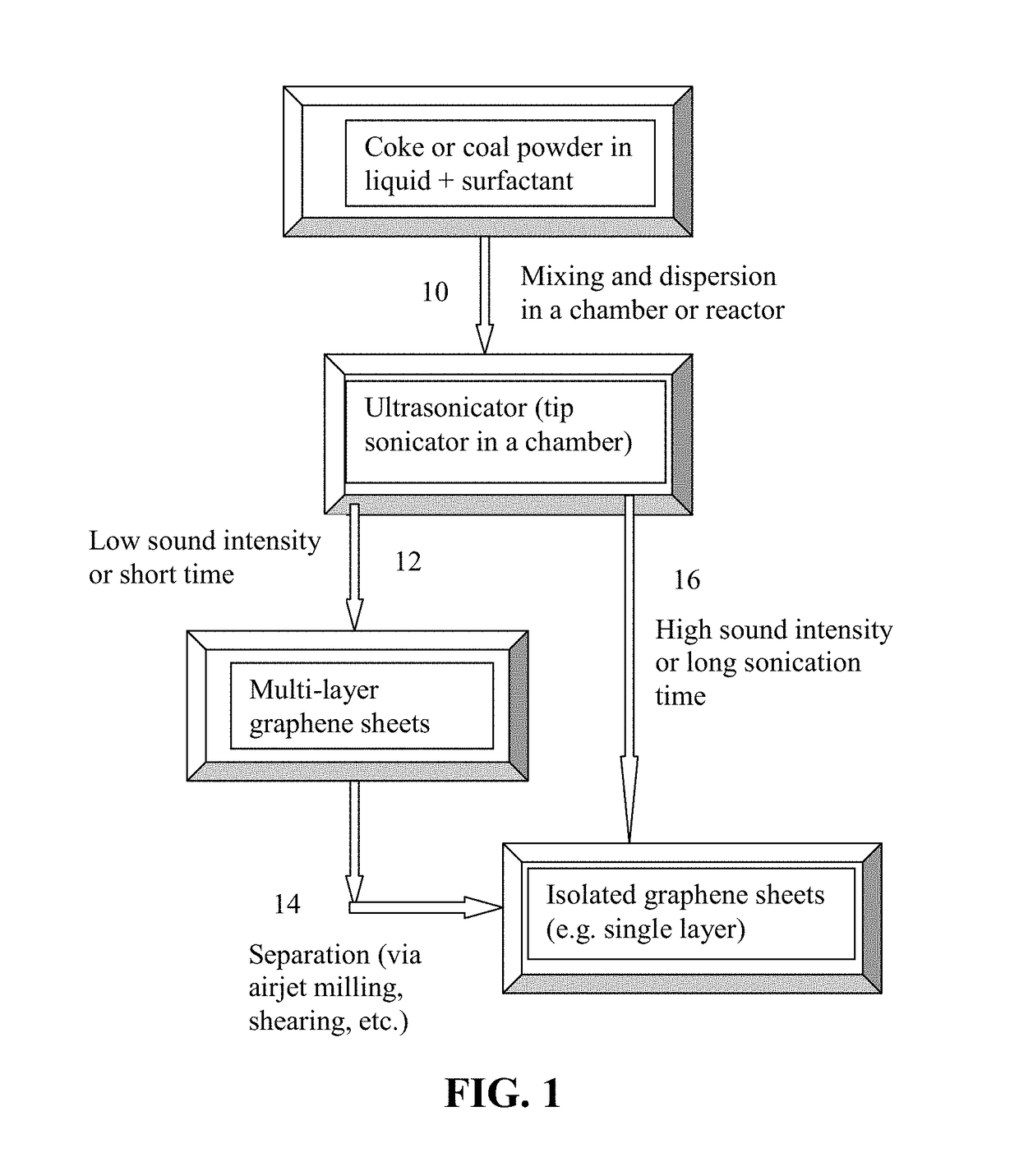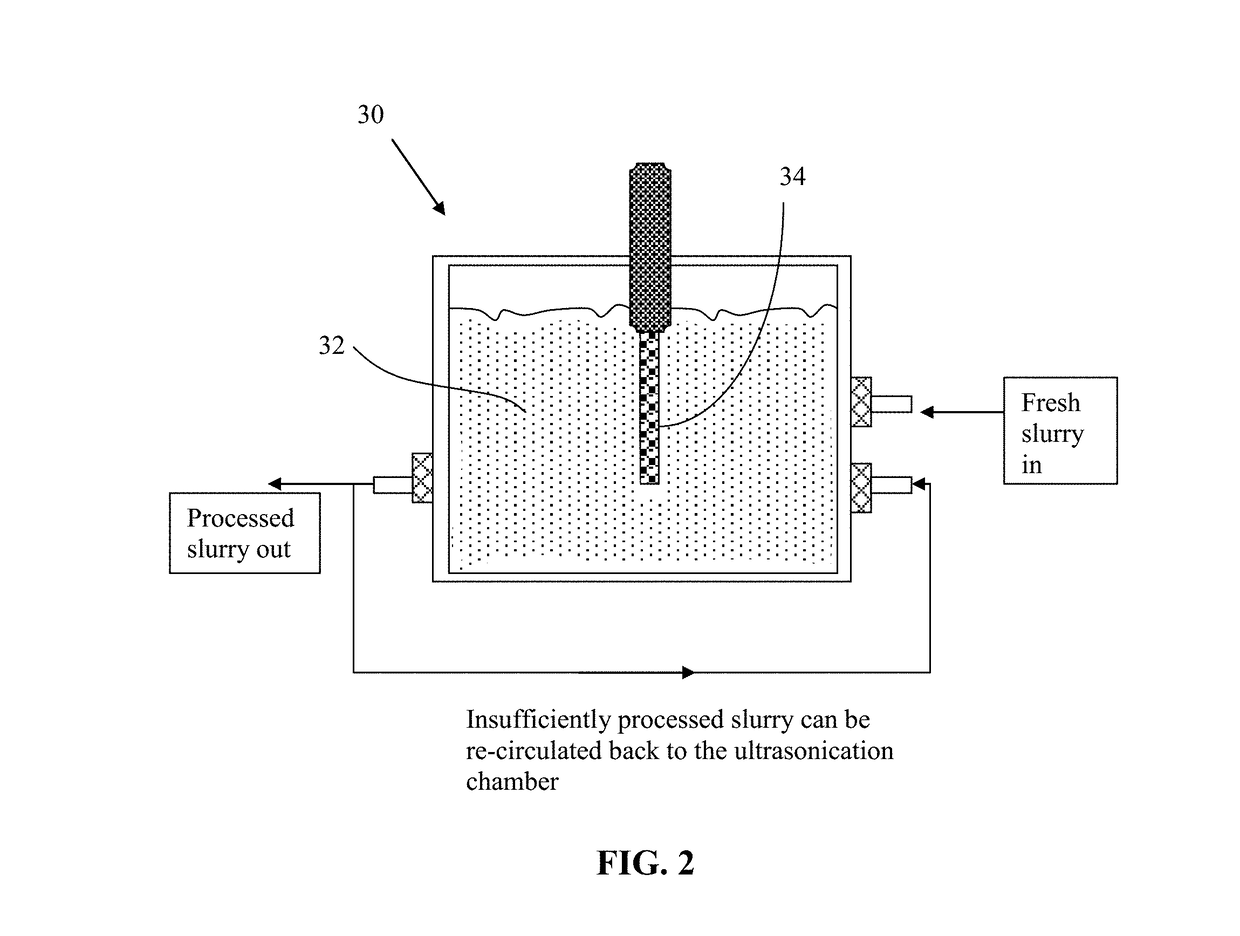Direct Ultrasonication Production of Graphene Sheets from Coke or Coal
a technology of ultrasonication and graphene, which is applied in the direction of inks, energy-based chemical/physical/physicochemical processes, polyether coatings, etc., can solve the problems of inability to mass produce ngps, process is not suitable for mass production of isolated graphene sheets for composite materials and energy storage applications, and heat-induced exfoliation approaches require a very tedious washing and purification step
- Summary
- Abstract
- Description
- Claims
- Application Information
AI Technical Summary
Benefits of technology
Problems solved by technology
Method used
Image
Examples
example 1
Production of Isolated Graphene Sheets from Milled Coal-Derived Needle Coke Powder
[0061]Needle coke, milled to an average length 2 / g, indicating that a majority of the graphene sheets being single-layer graphene, consistent with the microscopy results.
example 2
Production of Isolated Graphene Sheets from Milled Coal-Derived Needle Coke Powder (No Dispersing Agent)
[0063]Five grams of needle coke from the same batch as used in Example 1 were dispersed in 1,000 mL of deionized water to obtain a suspension. An ultrasonic energy level of 85 W (Branson 5450 Ultrasonicator) was used for exfoliation, separation, and size reduction for a period of 2 hours. Various samples were collected with their morphology studied by SEM and TEM observations and their specific surface areas measured by the well-known BET method. The specific surface area of the produced graphene sheets are typically in the range of 240-450 m2 / g (mostly few-layer graphene). Certain amounts of the sample containing mostly multi-layer graphene sheets were then subjected to ultrasonication again to produce ultra-thin graphene sheets. Electron microscopic examinations of selected samples indicate that the majority of the resulting NGPs are single-layer graphene sheets.
example 3
Production of Isolated Graphene Sheets from Milled Petroleum Needle Coke Powder
[0064]Needle coke, milled to an average length 2 / g (mostly single-layer graphene). Melamine appears to be the most effective dispersing agent, leading to the highest specific surface areas of graphene sheets.
[0065]Products containing a majority of graphene sheets being single-layer graphene can be readily produced using the presently invented direct ultrasonication method.
PUM
| Property | Measurement | Unit |
|---|---|---|
| temperature | aaaaa | aaaaa |
| temperature | aaaaa | aaaaa |
| temperature | aaaaa | aaaaa |
Abstract
Description
Claims
Application Information
 Login to View More
Login to View More - R&D
- Intellectual Property
- Life Sciences
- Materials
- Tech Scout
- Unparalleled Data Quality
- Higher Quality Content
- 60% Fewer Hallucinations
Browse by: Latest US Patents, China's latest patents, Technical Efficacy Thesaurus, Application Domain, Technology Topic, Popular Technical Reports.
© 2025 PatSnap. All rights reserved.Legal|Privacy policy|Modern Slavery Act Transparency Statement|Sitemap|About US| Contact US: help@patsnap.com



